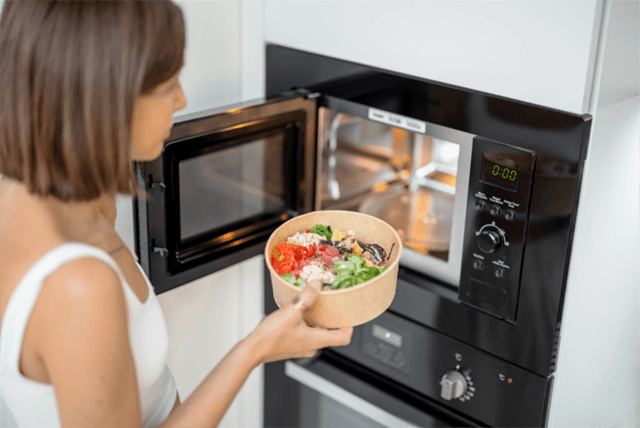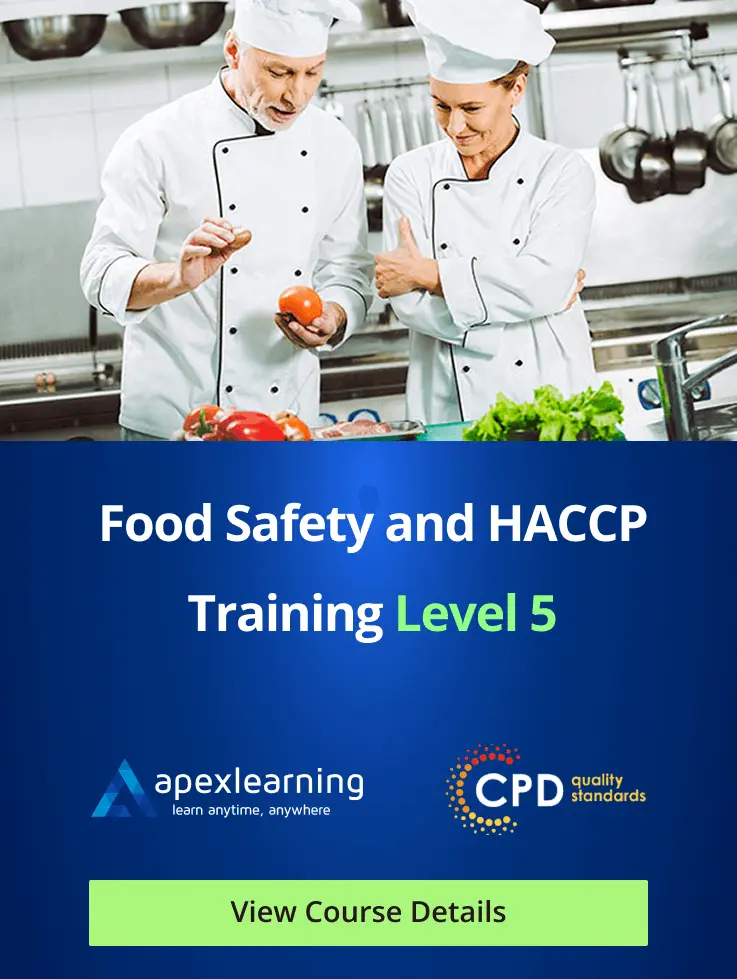While it’s convenient to reheat food, doing it incorrectly could lead to more than just a loss of flavour—it could also be a recipe for foodborne illness.
So, how many times is it safe to reheat foods? Let’s look into the science, expert guidelines, and practical tips to ensure your leftovers are not only delicious but safe to eat.
The Science Behind Reheating Food
Reheating food is a common practice, but it involves more than just warming up leftovers—there’s a delicate balance between safety and quality that needs to be maintained. The main concern with reheating food is the potential growth of bacteria, which can lead to food poisoning if not handled properly.
Bacteria and Temperature Control
When food is cooked, many harmful bacteria are killed off, but some resilient spores can survive. These spores, especially from bacteria like Bacillus cereus or Clostridium perfringens, can become active again if food is cooled too slowly or left at room temperature for too long. Reheating food to the correct temperature is crucial because it ensures that any bacteria that may have grown during storage are destroyed.
The danger zone for bacterial growth is between 5°C and 60°C (41°F to 140°F). When food is kept within this temperature range, bacteria can multiply rapidly, doubling in number as quickly as every 20 minutes. That’s why it’s essential to cool leftovers quickly and reheat them thoroughly. Food should be reheated to at least 75°C (165°F) to kill any harmful bacteria that may have developed.
Quality Considerations
Beyond safety, reheating food can also impact its quality. The texture, flavour, and nutritional content of food can degrade with each round of reheating. For example, proteins can become tough, and moisture can be lost, leading to dryness. Additionally, certain vitamins and minerals may break down under high heat, reducing the nutritional value of the food.
Repeated reheating can also lead to uneven heating, where some parts of the food reach the necessary temperature while others do not, increasing the risk of consuming bacteria-laden portions.
How Many Times Can You Safely Reheat Food?
Reheating food is a common practice, but it’s important to understand how many times it’s safe to do so without risking foodborne illness. The general rule is that food should ideally be reheated only once, but with careful attention to temperature and storage, it can be done more than once.
General Guidelines
- One Reheat Is Ideal: Food safety experts typically recommend reheating food only once. Each cycle of cooling and reheating increases the risk of bacterial growth, particularly with foods like rice, pasta, and dishes containing eggs. Bacteria such as Clostridium perfringens and Bacillus cereus can grow if food isn’t handled properly.
- Importance of Temperature: If you reheat food multiple times, ensure it reaches an internal temperature of at least 75°C (165°F) each time to kill any harmful bacteria. Uneven heating can leave parts of the food at lower temperatures, where bacteria can survive, so it’s important to stir and check the temperature throughout the dish.
- Food Type Considerations: Some foods are more prone to bacterial growth after being reheated multiple times. Rice, for example, can harbour Bacillus cereus if not stored and reheated correctly. It’s safest to reheat such foods only once.
Expert Insights
- NHS Guidelines: The NHS advises that food should ideally be reheated only once. They emphasise the importance of thorough reheating to ensure food is safe to eat. According to NHS guidelines, leftovers should be cooled quickly and stored in the refrigerator within two hours of cooking to minimise the risk of bacteria growing.
- Practical Considerations: While many people reheat food more than once, it’s essential to be cautious and ensure that food is reheated thoroughly each time. Consuming reheated food immediately after reheating is crucial to minimise any potential risks.
Food Types and Reheating Frequency
When it comes to reheating food, not all types of food are equally safe to reheat multiple times. Understanding which foods can be safely reheated and which should be avoided is crucial to prevent foodborne illnesses.
Foods Safe to Reheat Multiple Times
- Soups and Stews:
These types of dishes can generally be reheated multiple times, provided they are heated thoroughly each time to a temperature of at least 75°C (165°F). The liquid content in soups and stews helps to distribute heat evenly, reducing the risk of bacterial growth. - Casseroles and One-Pot Dishes:
Similar to soups and stews, casseroles and one-pot dishes can be safely reheated more than once. The key is to ensure they are stored correctly and reheated evenly to avoid cold spots where bacteria can thrive. - Vegetable Dishes:
Plain cooked vegetables can usually be reheated multiple times without much risk, especially if they are kept in the refrigerator promptly after cooking. However, be mindful of mixed dishes containing vegetables, as they may include other ingredients that are less stable when reheated.
Foods to Avoid Reheating More Than Once
- Rice:
Rice is particularly prone to harbouring Bacillus cereus, a bacterium that can survive cooking and thrive if the rice is left at room temperature. Reheating rice more than once can increase the risk of food poisoning, so it’s best to reheat rice only once and consume it immediately. - Pasta and Noodles:
Like rice, pasta and noodles can support bacterial growth if not handled properly. These foods are best reheated only once and eaten immediately after reheating to minimise the risk of contamination. - Chicken and Other Poultry:
Chicken and other poultry can become unsafe if reheated multiple times. Poultry needs to be reheated thoroughly to an internal temperature of at least 75°C (165°F) to kill any bacteria present. Reheating multiple times increases the chance of uneven heating, which can lead to the survival of harmful bacteria like Salmonella or Campylobacter. - Egg-Based Dishes:
Dishes that contain eggs, such as quiches or omelettes, can become risky if reheated more than once. Eggs are susceptible to bacterial contamination, and repeated reheating can compromise their safety. These dishes should ideally be reheated only once.
Potential Risks of Reheating Food Multiple Times
Reheating food multiple times can pose several risks, both in terms of safety and the quality of the food. Understanding these risks can help you make informed decisions about how to handle leftovers safely.
1. Increased Risk of Food Poisoning
One of the primary risks associated with reheating food multiple times is the increased likelihood of foodborne illnesses. Each time food is cooled and reheated, bacteria have more opportunities to multiply, especially if the food is not reheated to the proper temperature.
- Bacterial Growth: Harmful bacteria such as Salmonella, Listeria, and Clostridium perfringens thrive when food is not handled or reheated correctly. These bacteria can survive if food does not reach the necessary internal temperature of 75°C (165°F), which is crucial for killing pathogens.
- Toxins Production: Certain bacteria, like Bacillus cereus, can produce heat-resistant toxins. Even if the food is reheated thoroughly, these toxins may not be destroyed, increasing the risk of food poisoning if the food has been reheated multiple times.
2. Loss of Nutrients
Reheating food multiple times can degrade its nutritional content, particularly for heat-sensitive vitamins and minerals.
- Vitamin Loss: Vitamins such as vitamin C and some B vitamins are particularly sensitive to heat. Reheating food multiple times can lead to a significant reduction in these nutrients, making the food less nutritious than when it was freshly prepared.
- Protein Denaturation: Proteins in food, especially in meat and eggs, can denature and lose their nutritional value after repeated reheating. This not only affects the food’s nutritional profile but can also impact its digestibility.
3. Changes in Texture and Taste
Repeated reheating can adversely affect the texture and flavour of food, making it less enjoyable to eat.
- Texture Deterioration: Foods like meat, pasta, and rice can become dry, rubbery, or mushy after being reheated multiple times. This occurs as moisture evaporates with each reheating, altering the food’s original texture.
- Flavour Deterioration: The flavour of food can also degrade with each reheating cycle. Spices may lose their potency, and the food can develop an off taste, making it less appetising, even if it’s still safe to eat.
4. Food Safety and Hygiene
To mitigate these risks, it’s essential to adhere to proper food safety and hygiene practices:
- Proper Storage: Always cool leftovers quickly and store them in shallow containers in the refrigerator within two hours of cooking. This helps prevent the growth of harmful bacteria.
- Reheat Thoroughly: Ensure that food is heated evenly and reaches an internal temperature of at least 75°C (165°F). Stirring the food during reheating helps to eliminate cold spots where bacteria could survive.
- Reheat Only What You Need: To reduce the risks associated with reheating, only reheat the portion you plan to eat. This avoids the need to reheat the same food multiple times, preserving both its safety and quality.
Best Practices for Reheating Food
Reheating food can be convenient, but it’s important to do it safely to avoid foodborne illnesses and ensure that your meals taste as good as possible. Here are some practical tips and best practices for reheating food using various methods, ensuring even heating throughout the dish.
1. Using a Microwave
The microwave is a quick and easy way to reheat food, but it requires careful attention to ensure even heating.
- Stir or Rotate: To avoid cold spots where bacteria can survive, stir the food halfway through the reheating process or rotate the dish if your microwave doesn’t have a turntable. This helps to distribute heat evenly.
- Cover the Food: Covering your food with a microwave-safe lid or damp paper towel helps retain moisture and ensures that the food heats more evenly. It also prevents splatters, keeping your microwave clean.
- Check the Temperature: Use a food thermometer to ensure that the internal temperature of the food reaches at least 75°C (165°F) throughout. If you don’t have a thermometer, check that the food is steaming hot all the way through.
2. Reheating in the Oven
Reheating food in the oven takes longer but is ideal for retaining texture, especially for baked goods, casseroles, and meats.
- Preheat the Oven: Always preheat your oven to the required temperature before placing the food inside. This ensures even reheating from the start.
- Cover with Foil: To prevent the food from drying out, cover it with aluminium foil. This helps to retain moisture and heats the food evenly.
- Use Low Heat: Reheat food at a low temperature, around 150-160°C (300-320°F), to avoid overcooking the outside while the inside remains cold. This slow reheating method is particularly effective for dishes like lasagna or casseroles.
- Check for Even Heating: Just like with the microwave, ensure that the food reaches an internal temperature of 75°C (165°F) to make sure it’s safe to eat.
3. Reheating on the Stovetop
Reheating on the stovetop is great for soups, stews, and sauces, where even heating is crucial.
- Use Medium Heat: Start with medium heat to gradually bring the food to the desired temperature. Stir the food frequently to distribute the heat evenly and prevent burning at the bottom.
- Add a Little Water: For dishes that might dry out, like rice or pasta, add a small amount of water, broth, or sauce to keep the food moist during reheating.
- Cover the Pan: Covering the pan helps to trap heat and moisture, which ensures that the food heats evenly and remains flavorful.
- Check Temperature: Again, ensure that the food reaches at least 75°C (165°F) before serving.
Myths and Facts About Reheating Food
Myth 1: You Can Reheat Food as Many Times as You Want
Fact: The NHS recommends reheating food only once. Each time food is cooled and reheated, the risk of bacterial growth increases. To minimise the risk of foodborne illnesses, it’s safest to reheat food only once, ensuring that it reaches a temperature of at least 75°C (165°F) to kill any harmful bacteria.
Myth 2: Microwaves Cook Food from the Inside Out
Fact: Microwaves actually heat food from the outside in. The outer layers heat up first, and this heat gradually transfers to the inner parts. This is why it’s essential to stir or rotate food during reheating in a microwave to avoid cold spots where bacteria could survive.
Myth 3: Reheating Kills All Bacteria and Makes Food Safe
Fact: While reheating food to the correct temperature can kill most bacteria, it may not eliminate all risks. Some bacteria, like Bacillus cereus, can produce toxins that are heat-resistant. If food has been improperly stored or left out at room temperature for too long, reheating may not make it safe to eat. Proper storage is critical.
Myth 4: All Foods Are Safe to Reheat Multiple Times
Fact: According to the NHS, not all foods are safe to reheat multiple times. Foods such as rice and pasta are particularly risky when reheated multiple times due to the potential for bacterial growth. These foods should ideally be reheated only once and consumed immediately.
Myth 5: It’s Safe to Reheat Food Left Out Overnight
Fact: The NHS strongly advises against reheating food that has been left out at room temperature for extended periods, such as overnight. Bacteria can multiply rapidly at room temperature, and reheating may not kill all the bacteria or neutralise any toxins that have formed. Food left out for more than two hours should be discarded.
Enhancing Food Safety Knowledge
Ensuring food safety is crucial, whether you’re handling food at home or in a professional setting. To deepen your understanding of food safety and best practices, consider enrolling in specialised courses. These courses are designed to provide comprehensive knowledge and practical skills in various aspects of food safety, hygiene, and quality control.
- Diploma in Food Safety & Pest Management
This course covers essential topics related to food safety, including pest management, which is vital in preventing contamination in food environments. It’s ideal for those working in the food industry or anyone looking to enhance their food safety knowledge at home. - Quality Assurance
Quality assurance is critical in maintaining high standards in food production and preparation. This course provides insights into quality control processes, helping you ensure that food products meet safety and quality standards consistently. - Hygiene and Infection Control Level 4
This advanced course focuses on hygiene and infection control, essential for preventing foodborne illnesses and maintaining a safe food handling environment. It’s particularly useful for those in supervisory roles within the food industry.
Frequently Asked Questions
How many times can you safely reheat food?
You should ideally reheat food only once to minimise the risk of foodborne illnesses. Each time food is cooled and reheated, the potential for bacterial growth increases. If you must reheat food more than once, ensure it reaches an internal temperature of 75°C (165°F) each time to kill any harmful bacteria.
Is it OK to reheat cooked food twice?
While it’s possible to reheat food more than once, it’s generally not recommended. Reheating food multiple times increases the risk of bacterial growth and decreases the quality of the food. If you reheat food twice, ensure it is heated thoroughly and evenly.
What is the maximum time for safely reheating food?
Food should be reheated and consumed immediately after reaching the safe temperature of 75°C (165°F). The NHS advises that reheated food should not be left out for extended periods and should be consumed within two hours after reheating to prevent bacterial growth.
Is it safe to reheat rice more than once?
Reheating rice more than once is not recommended. Rice can harbour Bacillus cereus, a bacterium that can survive cooking and multiply if the rice is not stored or reheated properly. To reduce the risk of food poisoning, reheat rice only once and consume it immediately.
When was the Food Safety and Standards Act enacted?
The Food Safety and Standards Act was enacted in 2006 in India. This act consolidated various laws related to food safety and regulation to establish a single, comprehensive statute.
What is the Food Safety and Standards Act 2006?
The Food Safety and Standards Act 2006 is a comprehensive legislation in India that regulates the manufacture, storage, distribution, sale, and import of food. It aims to ensure that food is safe and suitable for human consumption, consolidating multiple previous food laws under one umbrella.
How does the Food Safety Act promote health and safety?
The Food Safety Act promotes health and safety by setting standards for food quality, hygiene, and safety. It requires businesses to ensure that their food products are safe to eat, correctly labelled, and free from contaminants. The act also provides authorities with the power to take action against those who fail to meet these standards, thereby protecting public health.
What is the Food Safety Act?
The Food Safety Act refers to legislation aimed at ensuring that food is safe to consume. In the UK, the Food Safety Act 1990 is a key piece of legislation that governs food safety, covering areas such as food hygiene, labelling, and the prevention of foodborne illnesses.
What is the Food and Drug Safety Act?
The Food and Drug Safety Act typically refers to legislation that regulates the safety of food and drugs. In different countries, it may refer to various laws, such as the U.S. Food and Drug Administration’s oversight in ensuring the safety and efficacy of food and pharmaceutical products.
What is the main defence under food safety law in the UK?
Under the Food Safety Act 1990 in the UK, the main defence for businesses is “due diligence.” This means that if a business can prove that they took all reasonable steps to prevent food safety violations, they may be protected from legal liability.
What are the 4 C’s of food safety?
The 4 C’s of food safety are key practices to reduce the risk of foodborne illnesses:
What are the 4 C’s of food safety?
The 4 C’s of food safety are key practices to reduce the risk of foodborne illnesses:- Cleaning: Ensuring hands, surfaces, and utensils are clean.
- Cooking: Cooking food to the correct temperature to kill harmful bacteria.
- Chilling: Keeping food cool to prevent bacterial growth.
- Cross-Contamination: Preventing the spread of bacteria from raw to cooked food.





 " alt="How to Become a Teaching Assistant in the UK" />
" alt="How to Become a Teaching Assistant in the UK" />
 " alt="Maintaining Patient Confidentiality: A Nursing Assistant’s Duty" />
" alt="Maintaining Patient Confidentiality: A Nursing Assistant’s Duty" />
 " alt="The Importance of Proper Body Mechanics for Nursing Assistants" />
" alt="The Importance of Proper Body Mechanics for Nursing Assistants" />

